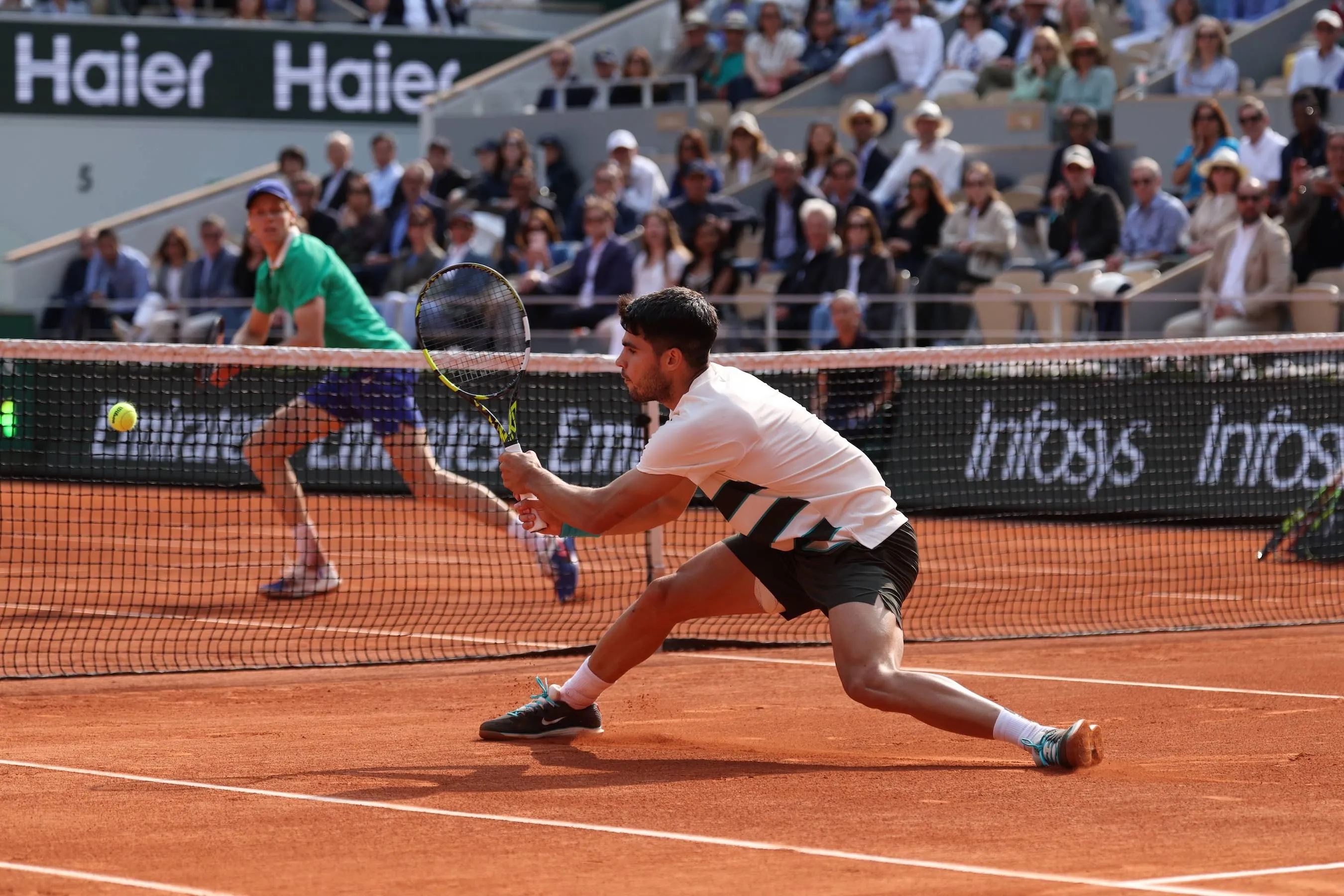Equipment Changes For Players With Tennis Elbow or Shoulder Issues
TennisFriday, 04 August 2023 at 06:00

Despite being a non-contact sport, the intense, precise movement and shot execution required in tennis still puts a lot of stress on the player’s body.
Therefore, risking a multitude of injuries for those competing at all levels of the game. While the most effective treatment is always physical rehab or a break from tennis, some arm- related injuries can also be addressed by making changes to your racket setup.
First and foremost, we’ll look at the strings. Today’s polyester strings bring a lot of benefits to the game, namely a higher degree of control, as well as increased access to spin. However, these strings are significantly stiffer than the more traditional gut and multifilament strings, which has led to a rise in arm injuries from the use of said polyester strings.
The simplest aspect of the stringbed to change is the tension. A high tension results in a very unforgiving racket, amplified to greater degree by the polyester material. Given that polyester strings will still provide a high degree of control at lower tensions, this is the easiest change to make to the stringbed to relieve strain on the elbow and shoulder. Many professional players will request tensions in the 40-50lb range for similar reasons.
Read also
Another consideration is to switch to a hybrid setup, which incorporates both a polyester and a gut/multi string to provide greater power in the stringbed, as well as increased comfort. Roger Federer, Novak Djokovic, and Andy Murray take the same approach with their racket setups.
Ultimately, having rackets restrung on a regular basis will aid injury prevention. Strings of all types, but particularly polyesters, will lose their elasticity over time and put greater stress on the user, as well as causing a dip in the string’s performance.
The general rule of thumb for restrings is based on the number of times you will play in a week, i.e. if you play three times a week, you should seek to restring three times a year, and personally I recommend increasing this frequency for full polyester setups.
The most widely-known solution for tennis elbow heard from fellow players is to increase the grip size of the racket, preventing the user from holding it too tightly and straining the elbow and forearm.
Read also
However, given modern rackets are far more comfortable than their older counterparts, I would first recommend exchanging the grips for new ones to add extra cushioning, as well as add a tacky feeling overgrip – such as Yonex Supergrap – such that the racket can be held more loosely. Only after these possible solutions would an increase in grip size need to be considered.
Furthermore, another common adjustment for tennis elbow is to increase the racket weight, as this will make the frame more stable and dampen shock, thus relieving pressure from the elbow and forearm. However, for upper arm and shoulder issues, the best method to relieve pain is to switch to a lighter racket if possible, reducing strain on the muscles and joints.
This does give a fine line to walk, so it is important not to make any major changes weight-wise to your choice of racket. Small adjustments are usually best, so be sure to try out a few rackets if possible, be it from a retailer or from a fellow club member.
There are other minor factors beyond these key solutions that may also help. For instance, avoiding playing with wet or dead tennis balls, adding a dampener to the racket’s stringbed, or exchanging the racket for a slightly less stiff frame.
Read also
Loading












